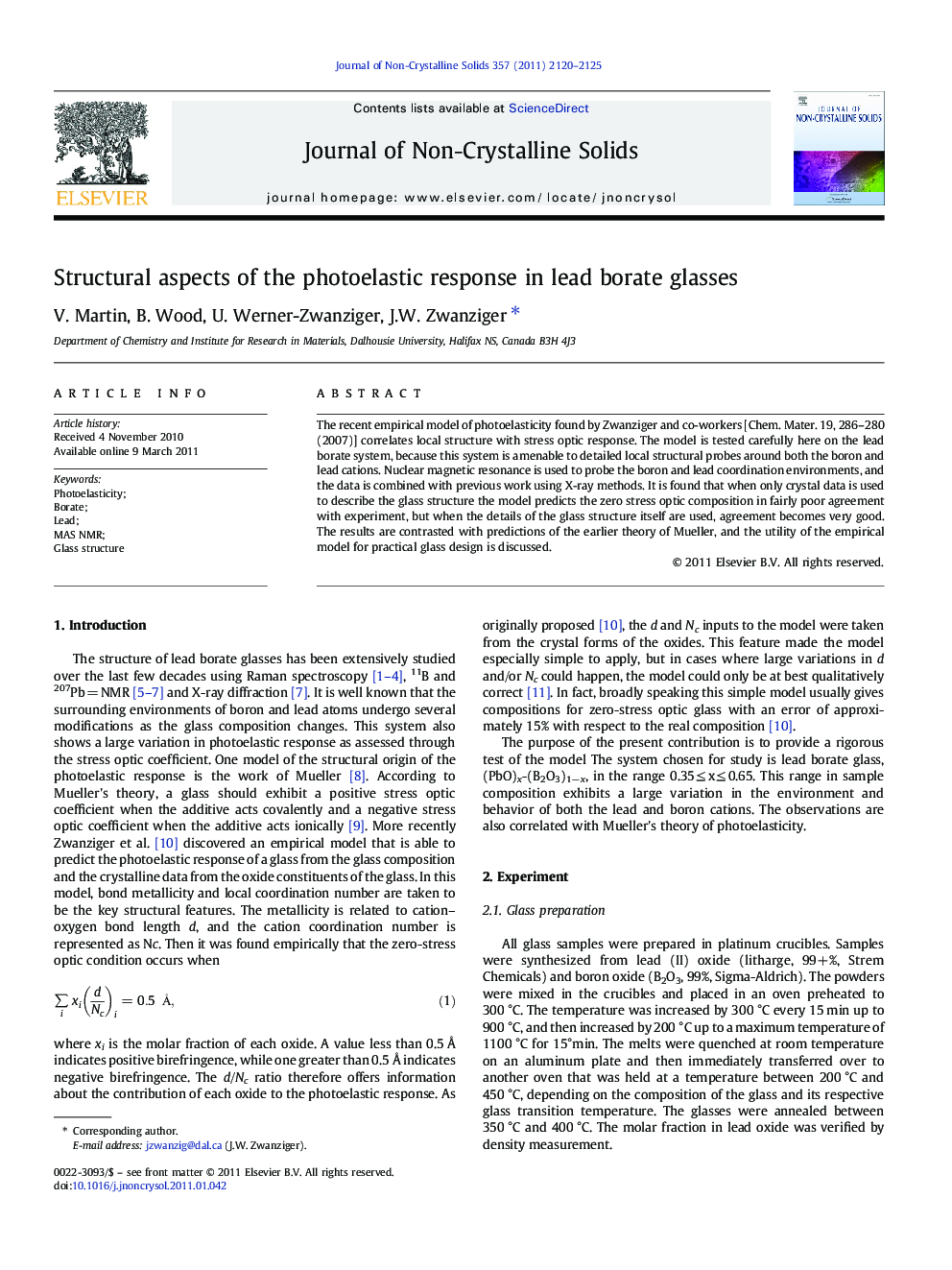| Article ID | Journal | Published Year | Pages | File Type |
|---|---|---|---|---|
| 1482322 | Journal of Non-Crystalline Solids | 2011 | 6 Pages |
The recent empirical model of photoelasticity found by Zwanziger and co-workers [Chem. Mater. 19, 286–280 (2007)] correlates local structure with stress optic response. The model is tested carefully here on the lead borate system, because this system is amenable to detailed local structural probes around both the boron and lead cations. Nuclear magnetic resonance is used to probe the boron and lead coordination environments, and the data is combined with previous work using X-ray methods. It is found that when only crystal data is used to describe the glass structure the model predicts the zero stress optic composition in fairly poor agreement with experiment, but when the details of the glass structure itself are used, agreement becomes very good. The results are contrasted with predictions of the earlier theory of Mueller, and the utility of the empirical model for practical glass design is discussed.
Research Highlights► The photoelastic response of lead borate glass is determined. ► Structural evolution determined by NMR. ► Authors' earlier model of photoelasticity carefully tested and confirmed.
